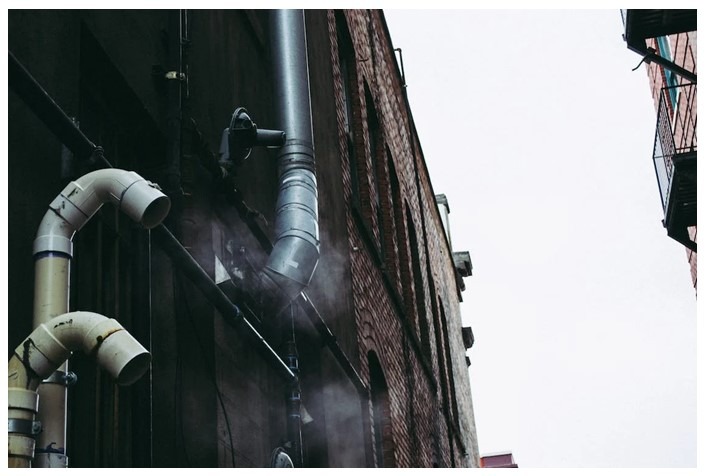Water damage in a home can range from a small leak to a major flood. While some types of water damage may be unavoidable due to weather events, there are steps you can take to prevent or minimize five of the most common types of water damage. Being aware of potential risks and taking preventative measures can save you the headache and expense of repairing avoidable water damage.
1. Pipe Leaks
One of the most prevalent sources of water damage comes from leaking pipes inside walls or under sinks and appliances. Over time, water pipes can corrode or crack from pressure, allowing water to seep out and soak into walls, floors, and cabinetry. Warning signs of a pipe leak include an unexplained spike in your water bill, water spots on walls or ceilings, buckling floors, and mold or mildew smells. If you suspect a leak, have a plumber inspect your pipes. Repairing damaged pipes early is much less expensive and invasive than allowing leaks to continue undetected.
To help prevent pipe leaks, monitor your plumbing fixtures and water usage for irregularities. Make sure all exposed pipes are properly insulated to prevent freezing and cracks from temperature fluctuations. Have old corroded pipes replaced preemptively before they start leaking? You can also install leak detection systems that use sensors to automatically shut off water flow if a leak is detected. Taking preventative plumbing maintenance measures will minimize the risk of costly pipe leaks and water damage.
2. Toilet And Sink Overflow
A toilet or sink overflow can quickly cause water damage if not addressed immediately. Overflowing happens when a drain gets clogged, allowing water to rise up and spill over the rim of a sink or toilet. Standing water from an overflow can warp wood floors and cabinets and lead to mold growth in the surrounding area. Prevent clogged drains by avoiding putting grease, hair, and bulky food scraps down sinks and toilets. Use drain strainers and regularly clear built-up debris from sink and tub drains. For toilets, avoid flushing anything other than waste and toilet paper, and use a plunger at the first sign of a clogged toilet. Install an automatic shutoff valve that stops the water flow if your toilet begins to overflow. Acting quickly to clear clogs and turn off water sources can greatly reduce the damage caused by overflows. You can contact https://shopschaperssupply.com for assistance.
3. Appliance And Hot Water Heater Leaks
Many home appliances use water that could leak and cause damage if not properly maintained. Washing machines, dishwashers, refrigerators with ice makers, and hot water heaters all have supply lines and drainage systems that can malfunction over time. Routinely inspect the hoses and seals on these appliances to check for cracks and leaks. When not in use, make sure to turn off and unplug washing machines and dishwashers, as a leak is more likely to occur when the appliance is idle. Replace old hoses and fittings that show wear and update appliances as recommended by the manufacturer. Putting water-using appliances on catch pans can also contain leaks. Hot water heaters should be drained and flushed annually to reduce sediment buildup that can lead to corrosion and leaks. Monitoring appliances and repairing minor leaks quickly prevents catastrophic appliance failures resulting in major water damage.
4. Rain And Storm Damage
Heavy rains, tropical storms, and hurricanes can all cause roof and window leaks leading to extensive water damage. Make sure your roof is in good repair with no missing, cracked, or curling shingles, or damaged flashing around vents and chimneys. Trim back tree branches to prevent debris from damaging your roof during storms. Interior leaks from heavy rains can be reduced by cleaning out gutters and downspouts so water can drain properly. Consider installing gutter covers to prevent clogs from leaves and other debris. Caulking and weatherstripping around windows and doors should be adequately maintained to prevent stormwater intrusion. For homes in flood-prone areas, measures like storm shutters, sump pumps, French drains, and elevation of HVAC systems can help minimize water damage from weather events. Taking proactive precautions by maintaining your home’s exterior and drainage systems makes it more resilient to leaks from heavy rain and storms.
5. Frozen And Burst Pipes
In colder climates, frozen pipes that burst and thaw are a prime cause of water damage during winter months. Pipes exposed to freezing temperatures can develop ice blockages, causing dangerous pressure buildups. As temperatures rise, the ice thaws and ruptures weakened pipes, leading to catastrophic leakage as water gushes out. To avoid frozen pipes, insulate any exposed plumbing, seal openings in unheated areas like crawl spaces and attics, and let faucets drip during sub-freezing weather. Maintain a constant temperature above freezing in your home, even while away, to keep pipes from freezing in interior walls. Learn how to shut off your home’s main water valve so you can stop the flow during an unexpected pipe burst. Catching and repairing frozen pipe leaks quickly limits the scope of damage to your home.
